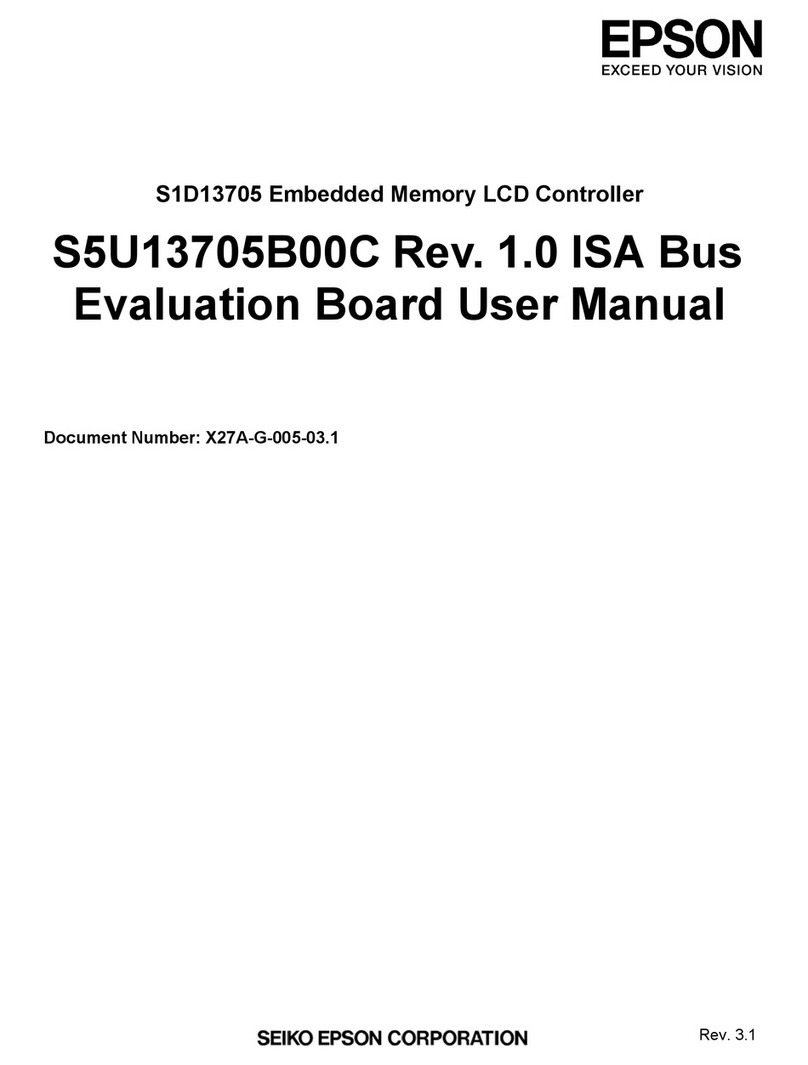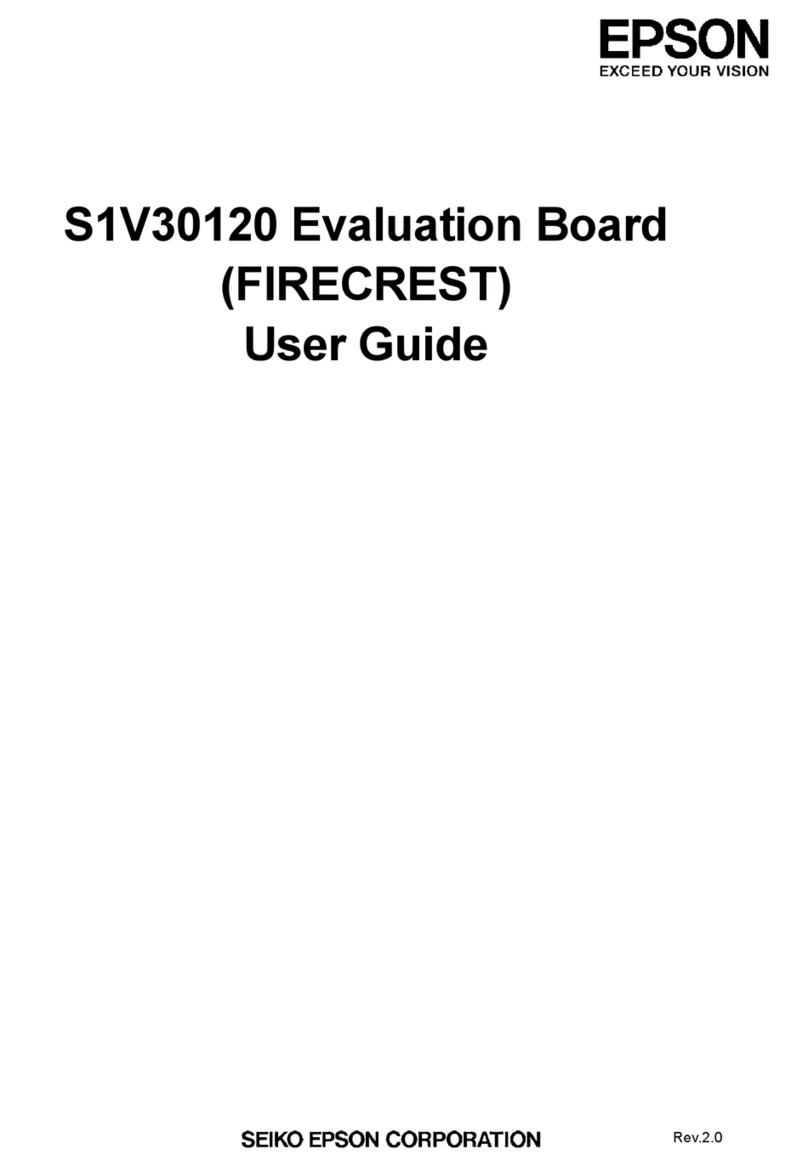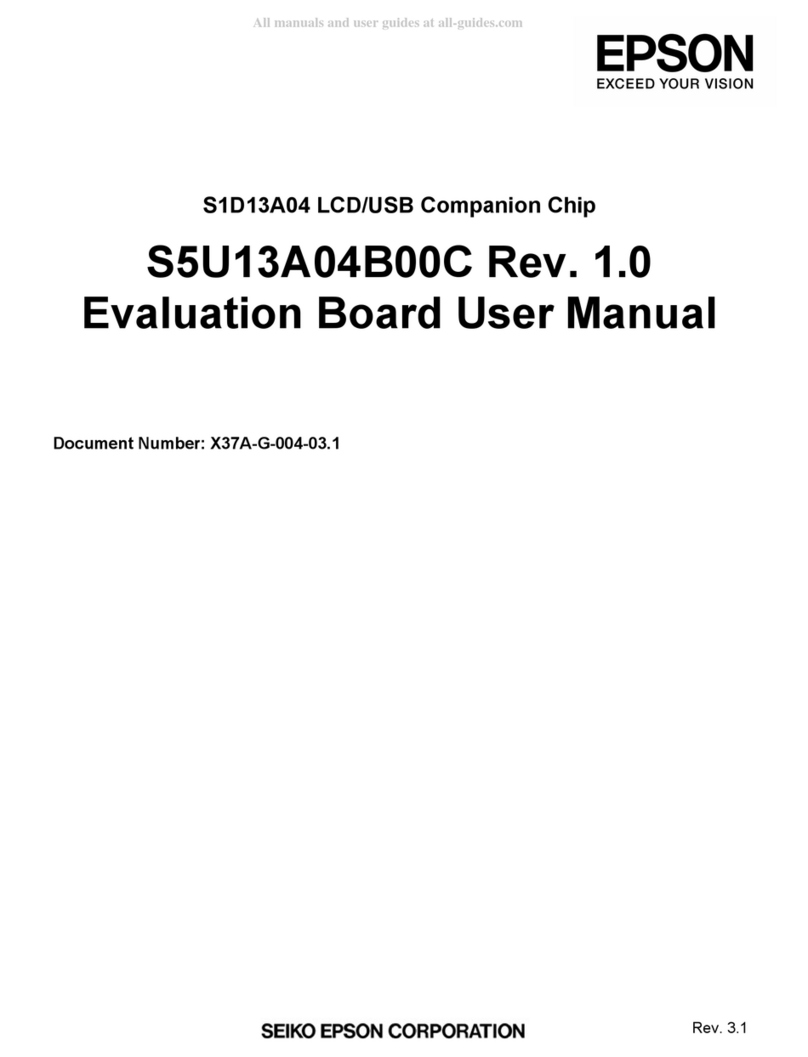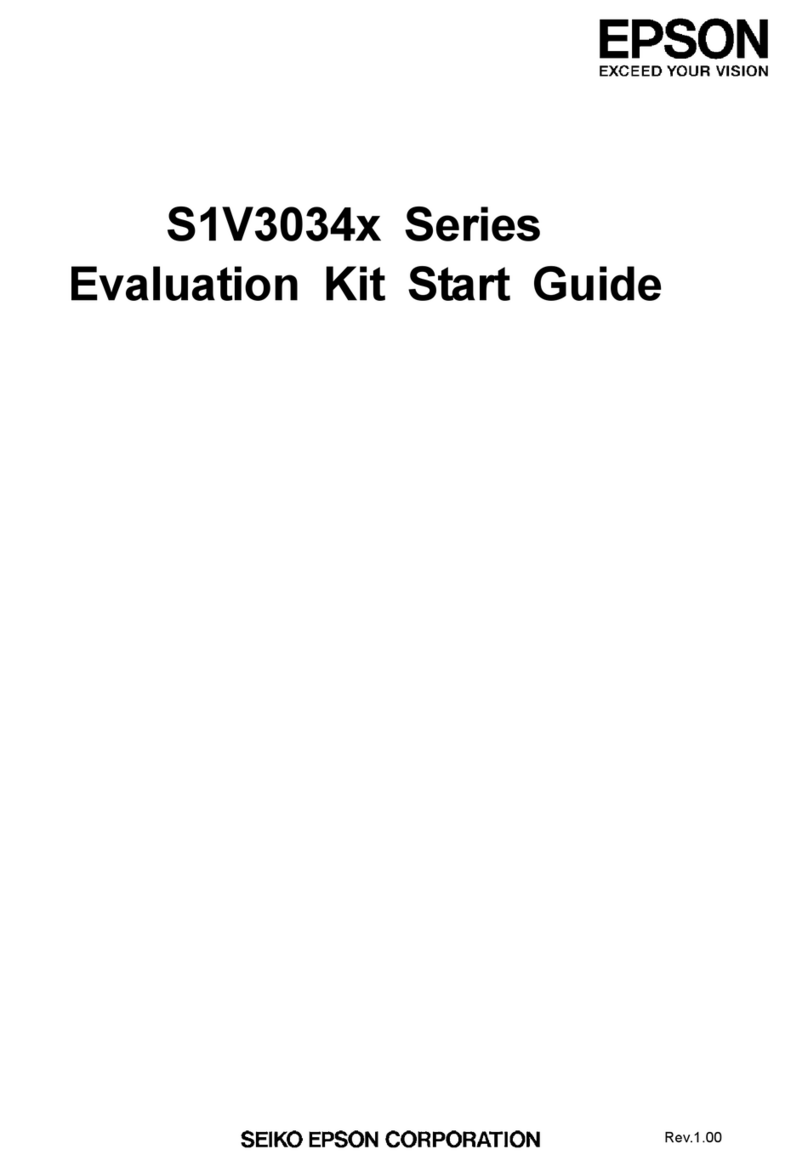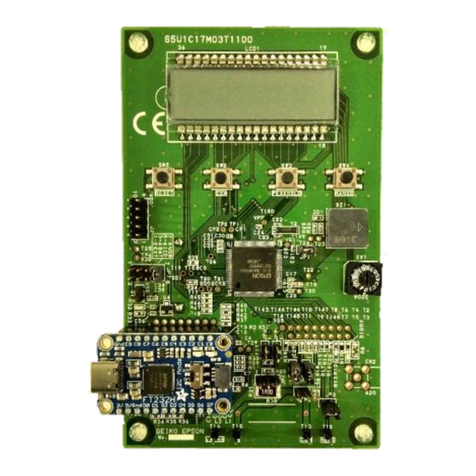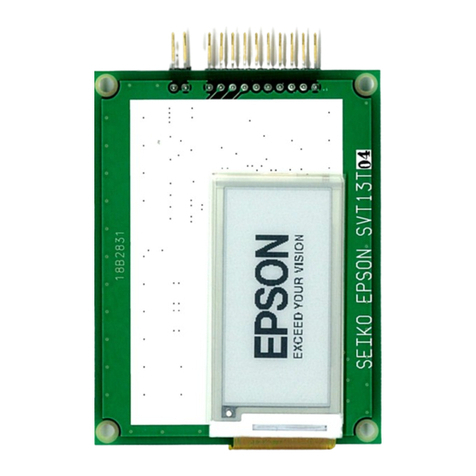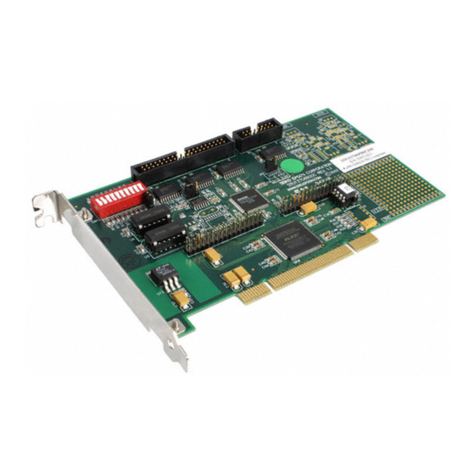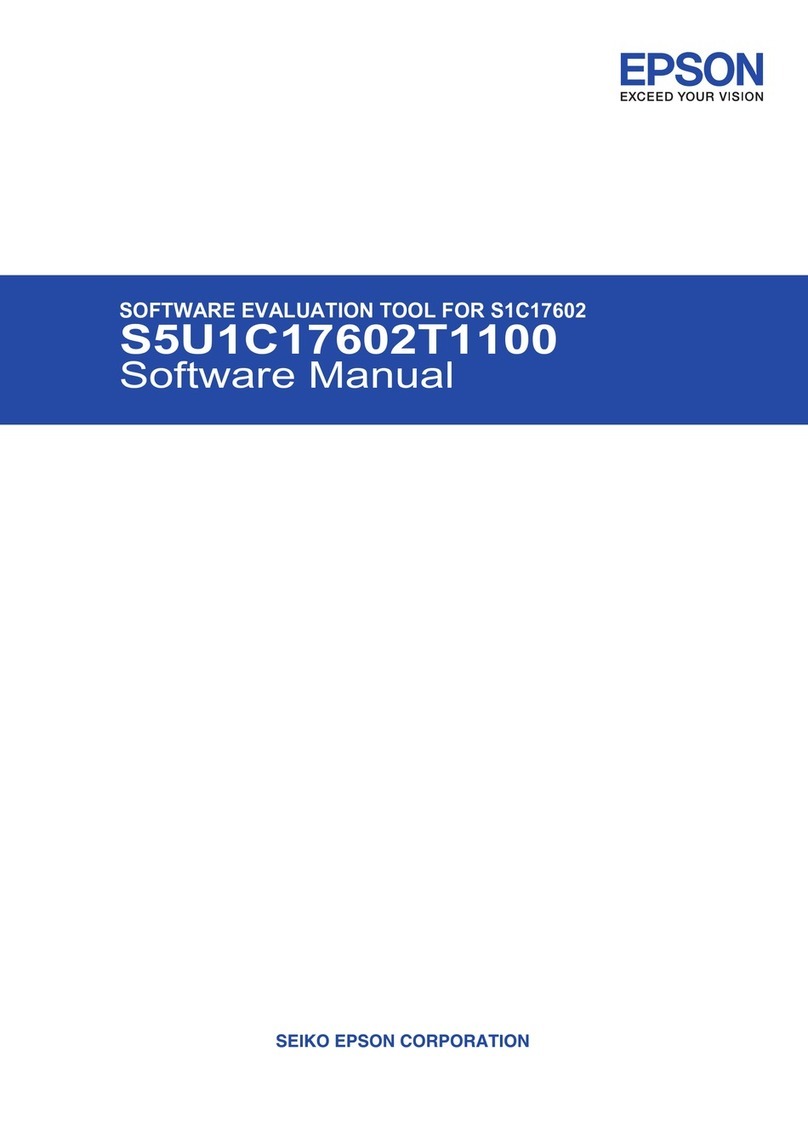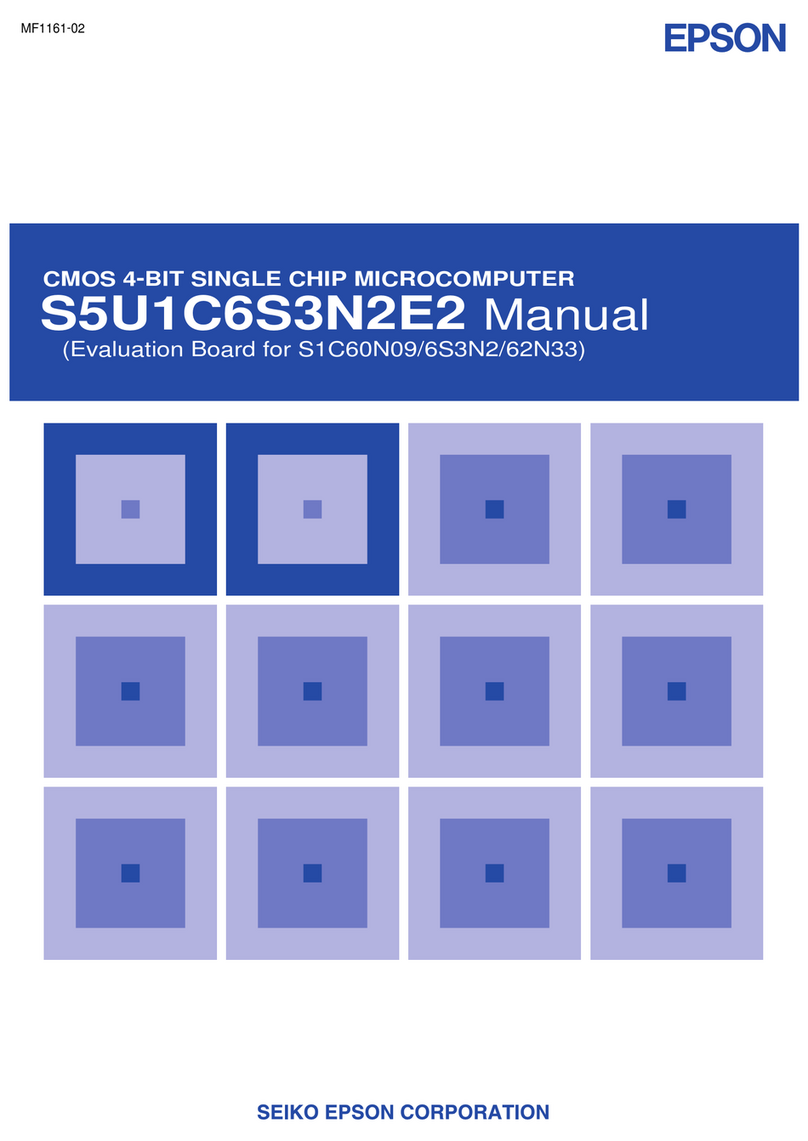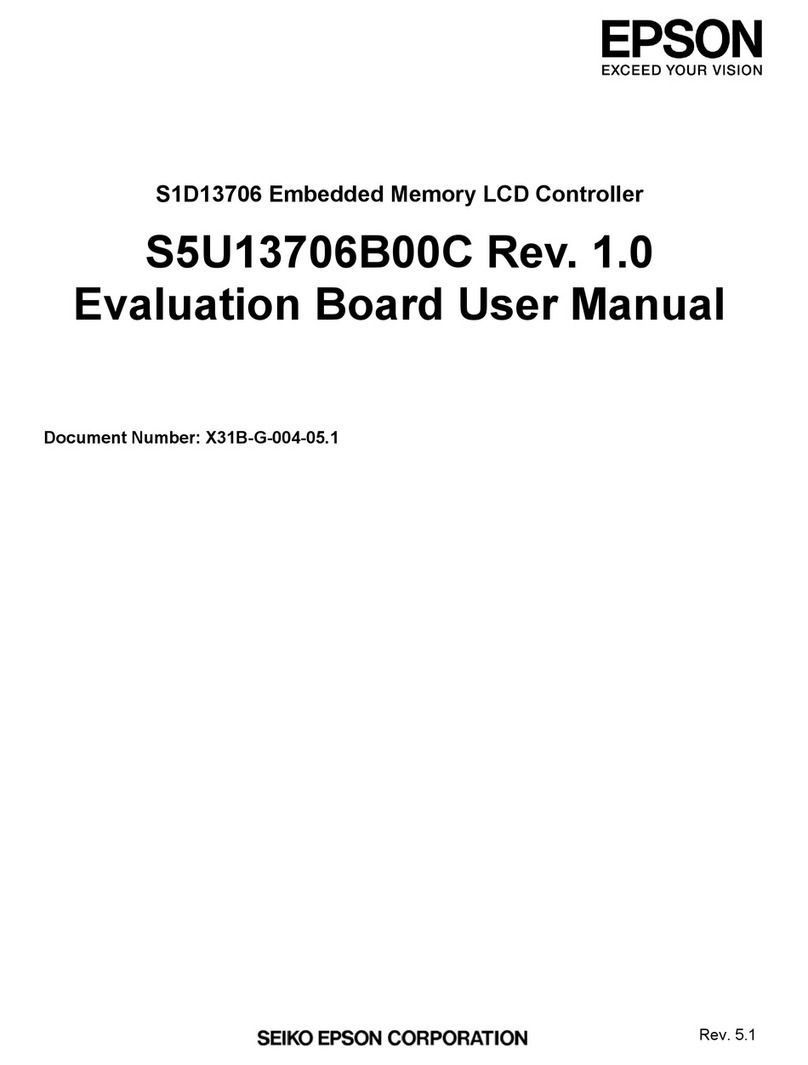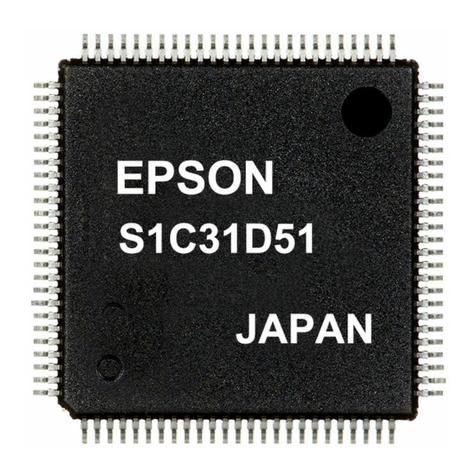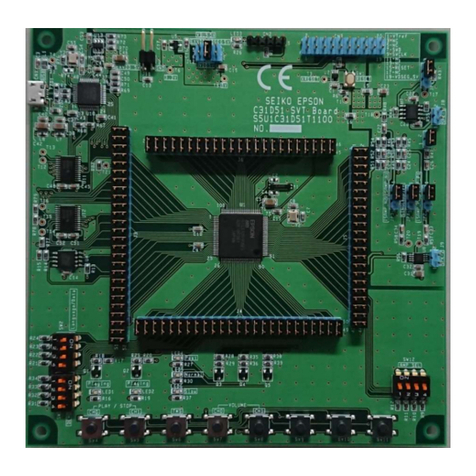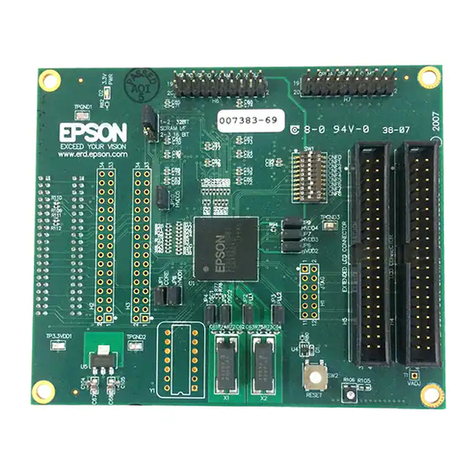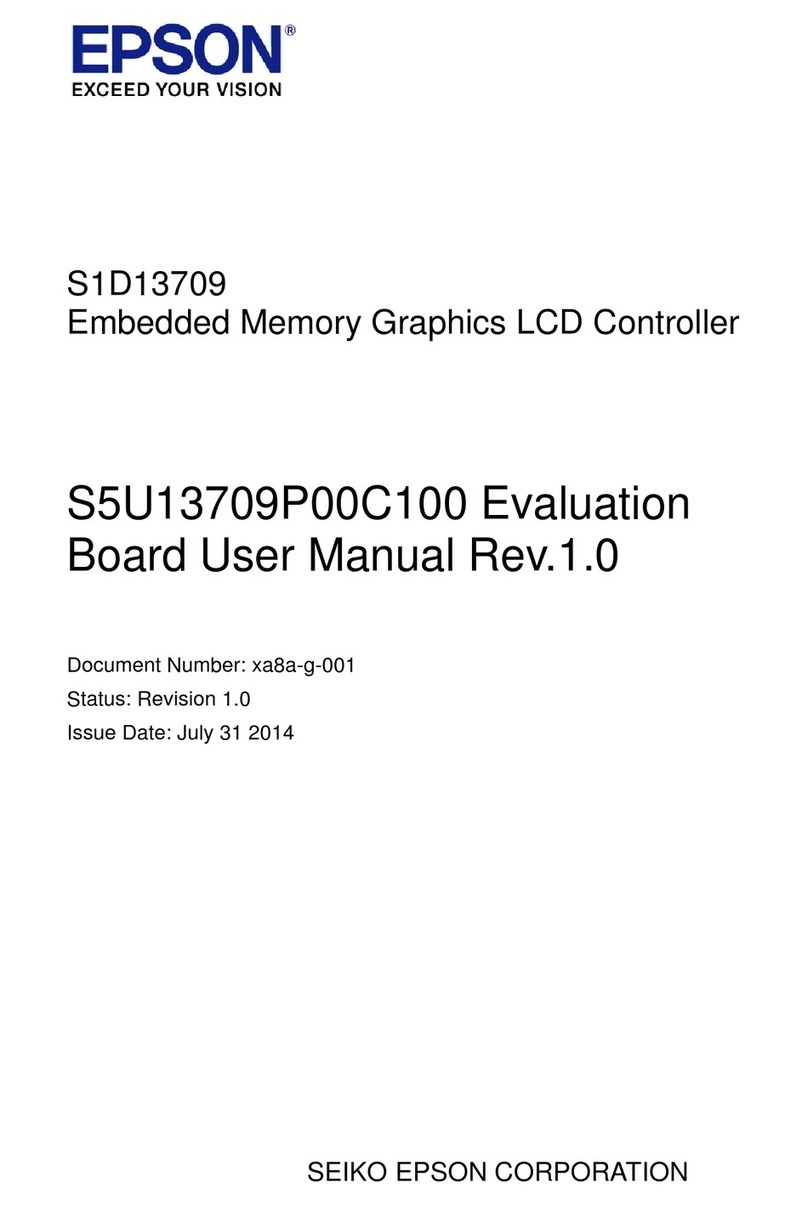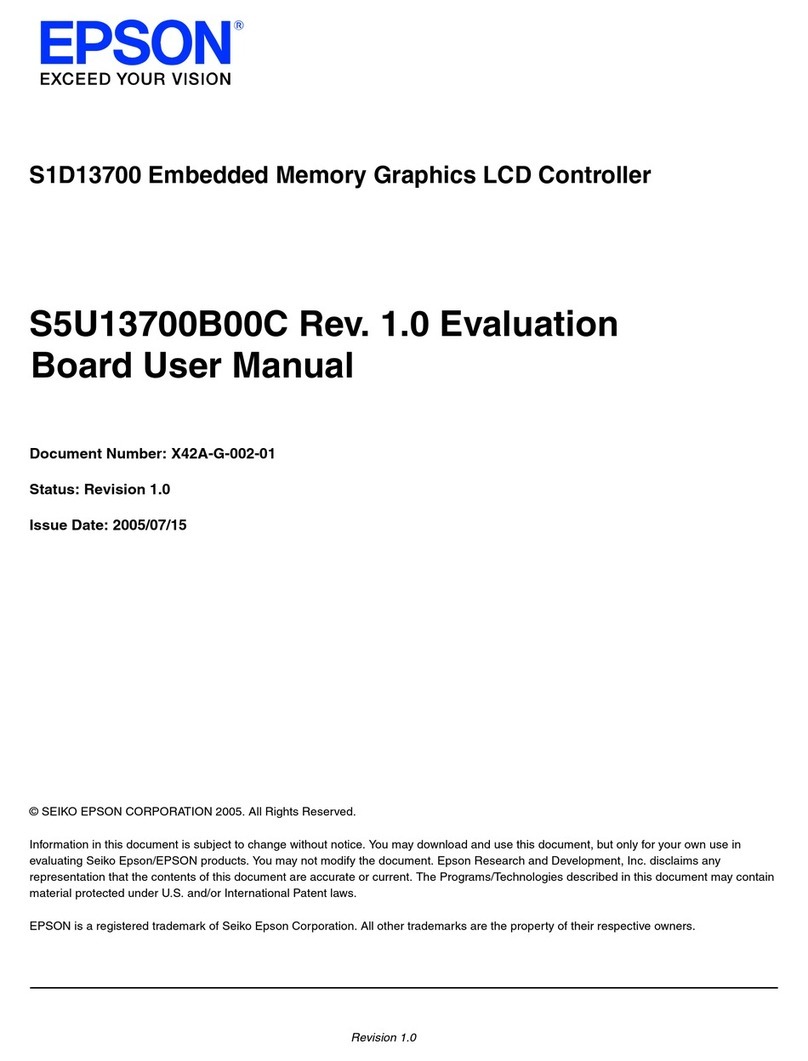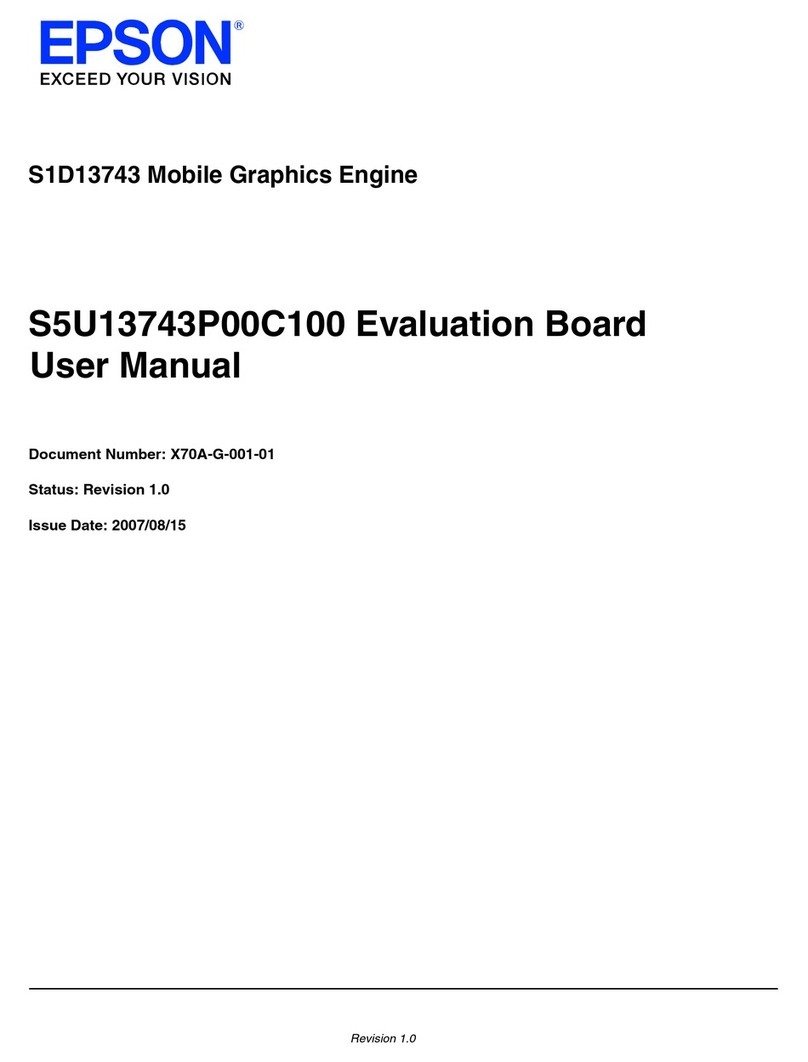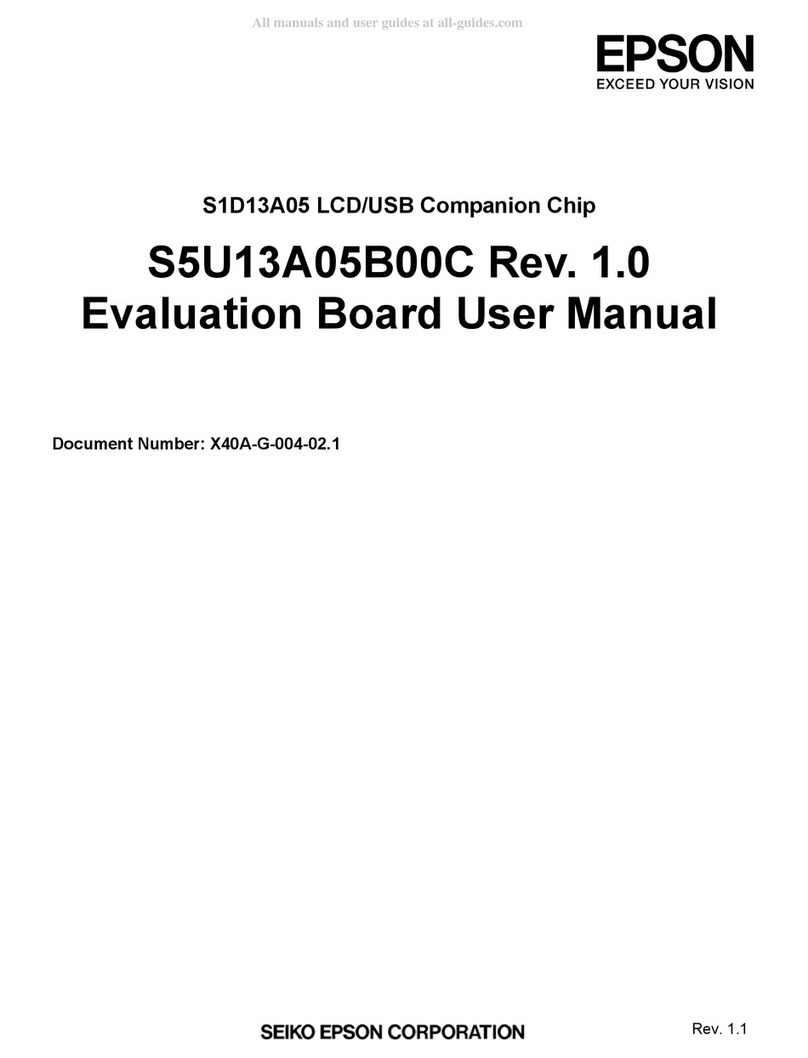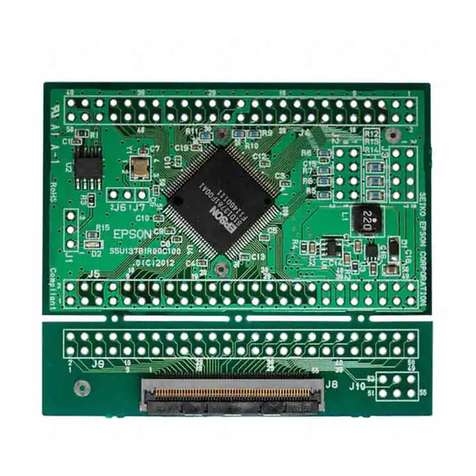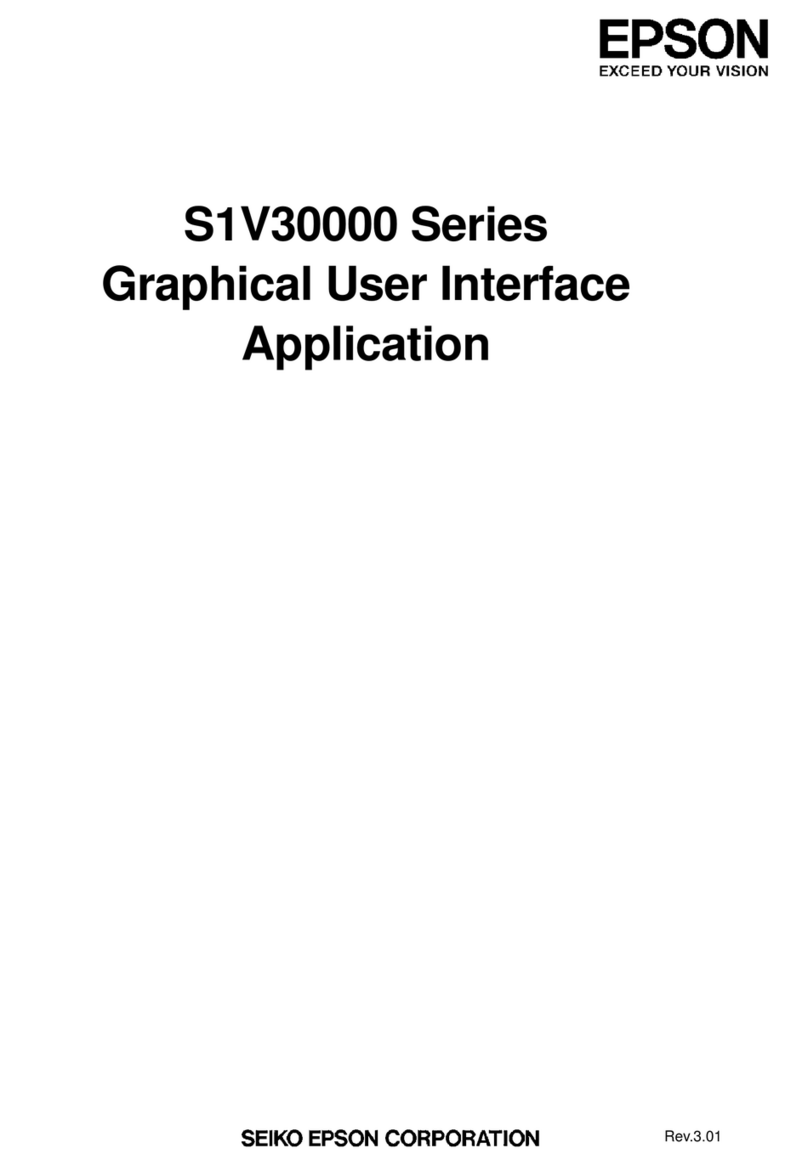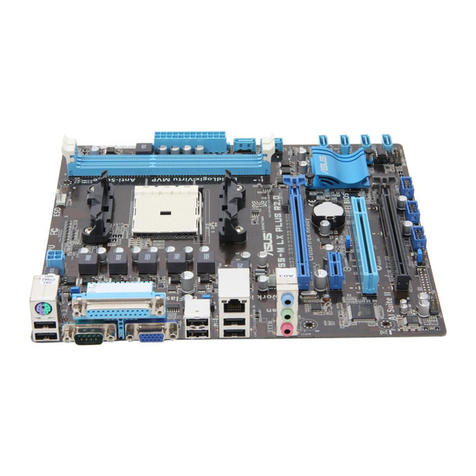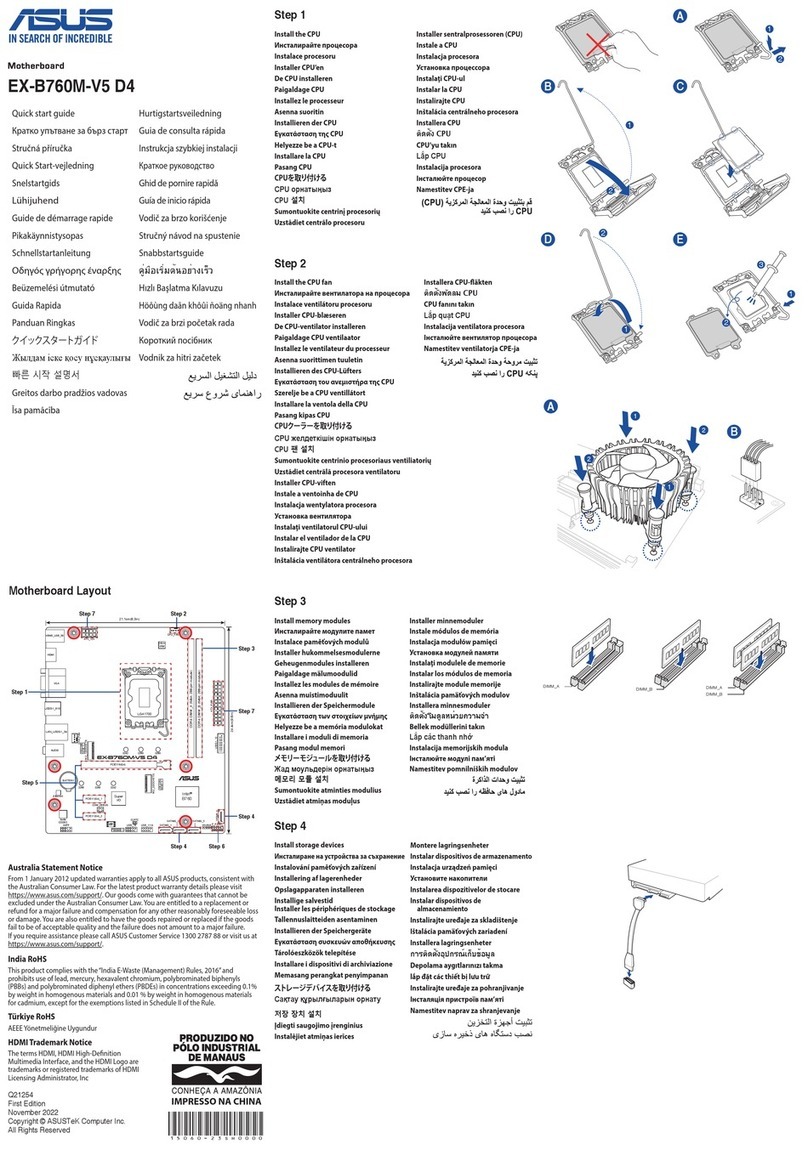
S1V30080 Series Evaluation Board User’s Guide EPSON i
(Rev. 1.00)
Table of Contents
1. Introduction .................................................................................................................. 1
1.1 Overview ......................................................................................................................................1
1.2 Cinderella board series configuration.......................................................................................2
1.3 User guide overview....................................................................................................................2
2. Before Starting.............................................................................................................. 3
2.1 Items provided.............................................................................................................................3
2.2 Cinderella (S1V30080 voice LSI evaluation board)...................................................................4
2.2.1 Part names and functions ....................................................................................................... 4
2.2.2 Cinderella block diagram....................................................................................................... 10
2.3 CASTLE board........................................................................................................................... 11
2.3.1 CASTLE Part names and functions....................................................................................... 11
2.3.2 CASTLE block diagram......................................................................................................... 16
2.4 Cinderella and CASTLE connection ........................................................................................17
3. Usage Instructions..................................................................................................... 18
3.1 Writing data to Cinderella board ..............................................................................................18
3.1.1 Data writing flowchart............................................................................................................ 19
3.1.2 Cinderella board data writing micro SD card......................................................................... 21
3.2 Cinderella board standalone demo..........................................................................................22
3.2.1 Standalone mode 1 control.................................................................................................... 23
3.2.2 Standalone mode 2 control.................................................................................................... 24
3.3 Connecting to an external host CPU .......................................................................................25
4. Usage Precautions..................................................................................................... 27
4.1 DIP switch definitions ...............................................................................................................27
4.2 Voice output pin precautions ...................................................................................................27
4.3 External power supply precautions.........................................................................................28
4.4 PLD and external flash memory power supply selector jumper pin J6................................ 28
4.5 Micro SD card precautions.......................................................................................................28
5. Board Circuit Diagram ............................................................................................... 29
Revision History............................................................................................................. 35
